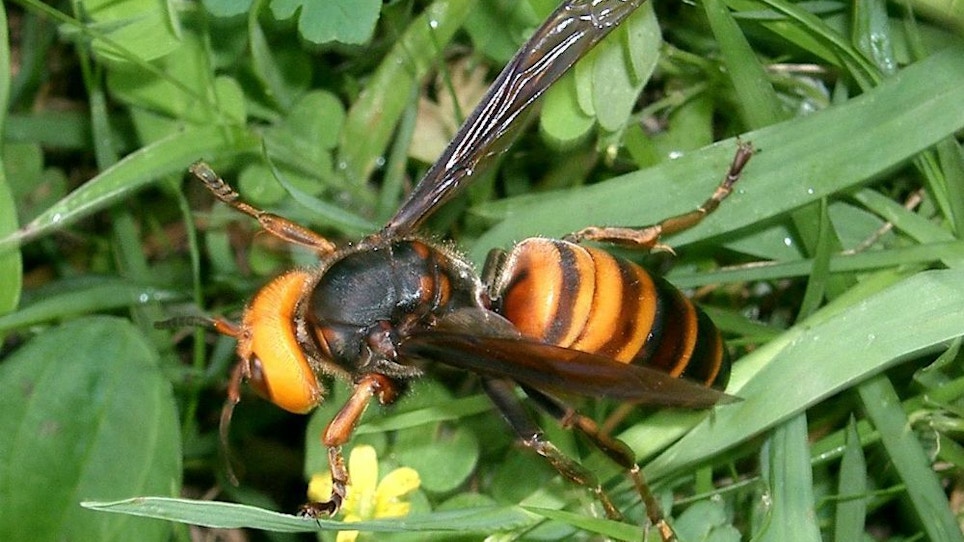
The Asian giant hornet (Vespa mandarinia) has been called the Murder Hornet because it decimates honeybee colonies to feed its young and also kills 30-40 humans annually in Japan. (Photo: Wikipedia Commons/Kenpei I)
The official name is Asian giant hornet and the biological name is Vespa mandarinia, but someone labeled this 2-inch venomous flying beast the Murder Hornet and that seems quite fitting.
Hurray.
That's a sarcastic hurray, of course, sort of like, "Hurray, it's November and I didn't draw a tag in Kansas but my friend did and just texted a photo of a Booner."
We have these giant hornets in the United States now, first sighted and confirmed in Washington in December 2019. Also just across the border in British Columbia, too. They're bad news because these giant hornets use their mandibles to decapitate honeybees and carry the headless bodies to feed their young. Honeybees already have enough problems here from myriad issues to not have to worry about these new hornets.
Yep, giant carnivorous , venomous hornets. Hurray.
Decapitation might be the best thing, though, because the pain from the quarter-inch stinger that pumps venom apparently is horrible. The venom attacks and dissolves the body's tissue and affects the nervous system. One sting would be bad. Too many stings at one time could be problematic. Because of the hornets' size, their stingers also easily can go through normal bee-keeping apparel and clothing. They kill about three dozen people a year in Japan.
Conrad Bérubé, a beekeeper and entomologist in Nanaimo, Canada, told the New York Times that being stung by one of the hornets is “like having red-hot thumbtacks being driven into my flesh.”
Whoever designs a flexible, full-body bee suit from the material used for snake chaps might make some money. Or kevlar, although that would be quite expensive. Nomex? The flame-retardant apparel could have dual use, since flamethrowers are sometimes used in Japan to kill the giant nests once they're discovered.
Which Caliber is Best?
That leads us to consideration of which caliber is best to dispatch these flying beasts. At 2 inches in size and a willingness to attack small birds or large humans, we certainly need to be ready for anything.
The 10- and 12-gauge shotgun with anything from birdshot to buckshot definitely would get the job done, but could be overkill. The few buckshot pellets could miss the hornet, too. You'd want a swarm of lead — no non-toxics or TSS required — with a decent pattern. Using No. 8 or No. 9 bird shot from a 20-gauge or .410 would have the benefits of reduced recoil and ample shot.
It also would be a bit more sporting with the .410, but you better not miss.
For sharpshooters along the lines of Annie Oakley, you could take aim with the aptly named .22 Hornet to test your skills. Or perhaps the .217 Bee, a wildcat round of the P.O. Ackley-designed .218 Bee. Some say the .217 is an improvement of the original. You better be on your A-game to pop a 2-inch flying hornet with a small caliber bullet, though. Let us know how it works out.
Perhaps the best forces to employ would be everyone with a 6.5 Creedmoor heading to Washington to merely wave around their rifles in near the murder hornet nests. As we all know, the 6.5 Creedmoor immediately vaporizes everything, right?
At some point we'll hear from the bowhunting community, too, because we all know that real murder hornet hunters use bows. Fixed or expandable broadheads?
Take a look at this stunning video of a giant hornet attacking a mouse.





